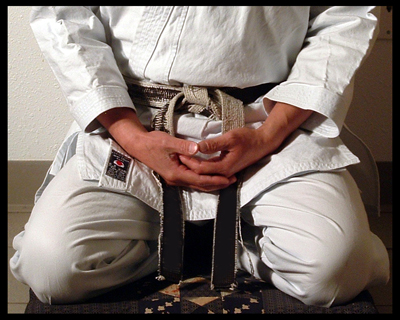Karate, a martial art known for its powerful strikes, precise movements, and disciplined training, has a rich history that traces back to ancient times. Its evolution from rudimentary self-defense techniques to a sophisticated modern practice is a testament to the adaptability and resilience of martial arts traditions.
Ancient Origins: The Birth of Karate
The roots of karate can be traced to the Ryukyu Kingdom, which is now Okinawa, Japan. During the 14th century, Okinawa was a vibrant trade hub, interacting with various cultures, particularly China. This cross-cultural exchange introduced Chinese martial arts to the Okinawan people. One significant influence was the Chinese martial art of “Kenpō” (拳法), meaning “fist law,” which laid the groundwork for the development of karate.
The Okinawans synthesized these Chinese techniques with their indigenous fighting styles, creating “Tode” or “Te” (手), meaning “hand.” Te was further refined in three Okinawan regions: Shuri, Naha, and Tomari, each giving rise to different styles known collectively as “Shuri-te,” “Naha-te,” and “Tomari-te.” These styles formed the foundation of what would become modern karate.
Transition to Okinawa-te: Refinement and Codification
During the 17th century, Okinawa was annexed by the Satsuma clan of Japan, leading to a ban on weapons. This prohibition necessitated the development of unarmed combat techniques for self-defense, further advancing the practice of Te. Martial artists focused on refining strikes, blocks, and kicks, emphasizing efficiency and effectiveness.
The 19th century saw the emergence of key figures who would shape karate into a more organized discipline. Matsumura Sōkon, an influential martial artist, played a significant role in integrating various techniques and establishing structured training methods. His teachings contributed to the formalization of karate and its spread beyond Okinawa.
The Birth of Karate: Gichin Funakoshi and Beyond
The early 20th century marked a pivotal period in the evolution of karate. Gichin Funakoshi, often regarded as the father of modern karate, was instrumental in introducing karate to mainland Japan. In 1922, he gave a demonstration at the Kodokan Judo Institute in Tokyo, captivating the audience with his skill and philosophy. Funakoshi’s efforts led to the adoption of karate by Japanese universities and the formation of the first karate clubs.
Funakoshi also played a key role in standardizing karate, developing the “Heian” kata series, which simplified training for beginners. He emphasized the philosophical aspects of karate, promoting it as a means of character development and self-discipline rather than merely a fighting technique.
Modern Karate: Global Spread and Diversification
Post-World War II, karate’s popularity soared internationally. American servicemen stationed in Okinawa and Japan were exposed to karate and brought it back to the United States, where it quickly gained traction. The establishment of karate schools, or “dojos,” worldwide facilitated the spread of various styles, including Shotokan, Goju-Ryu, Shito-Ryu, and Wado-Ryu, each emphasizing different aspects of the art.
The formation of organizations such as the Japan Karate Association (JKA) in 1949 and the World Karate Federation (WKF) in 1990 helped standardize competition rules and promote karate as a sport. Karate’s inclusion in the 2020 Tokyo Olympics marked a significant milestone, showcasing its global appeal and recognition as a competitive discipline.
The Rise of Karate Combat and Karate IKA
In recent years, the landscape of karate has expanded with the advent of new organizations and competitive formats. Karate Combat, launched in 2018, is a professional league that has brought a fresh, dynamic approach to traditional karate. It emphasizes full-contact fighting within a highly stylized, immersive environment, attracting a global audience and providing a platform for karateka to showcase their skills in a modern, spectator-friendly format.
Karate IKA (International Karate Association), established in 1952, has been pivotal in promoting traditional karate practices while embracing innovation. It provides a global network for practitioners, organizing tournaments and offering standardized training programs. The IKA’s commitment to preserving the philosophical and technical aspects of karate ensures that the martial art remains grounded in its roots while adapting to contemporary needs.
In 2024, a revitalized version of the International Karate Association (IKA) emerged, aiming to rebuild the old organization and expand its global reach. This new IKA is dedicated to redefining the karate brand as a comprehensive fighting system, blending traditional techniques with modern innovations..
Karate Today: Tradition Meets Innovation
Today, karate continues to evolve, blending traditional practices with modern innovations. The core principles of discipline, respect, and self-improvement remain integral to training. Technological advancements have enhanced training methodologies, with online tutorials, virtual dojos, and advanced equipment making karate more accessible than ever.
Moreover, karate has embraced a holistic approach, incorporating physical fitness, mental well-being, and self-defense techniques into its curriculum. It remains a versatile and dynamic martial art, attracting practitioners of all ages and backgrounds.
Conclusion
The journey of karate from ancient Okinawan fighting techniques to a global martial art is a remarkable story of cultural exchange, adaptation, and perseverance. Its evolution reflects the enduring human spirit to refine and preserve valuable traditions while embracing change. As karate continues to grow and adapt, it remains a powerful testament to the art of self-discipline, self-defense, and self-improvement.
.
Samsung Demo Phone
The Good
- Modern and fresh yet sleek design
- Improved battery life
- Performance of M3 Chipset
- Designed for a larger screen
The Bad
- Lackluster Audio and tiny speaker
- Still ridiculously large
- Can't render the brightest colors
- Missing dedicated ports

